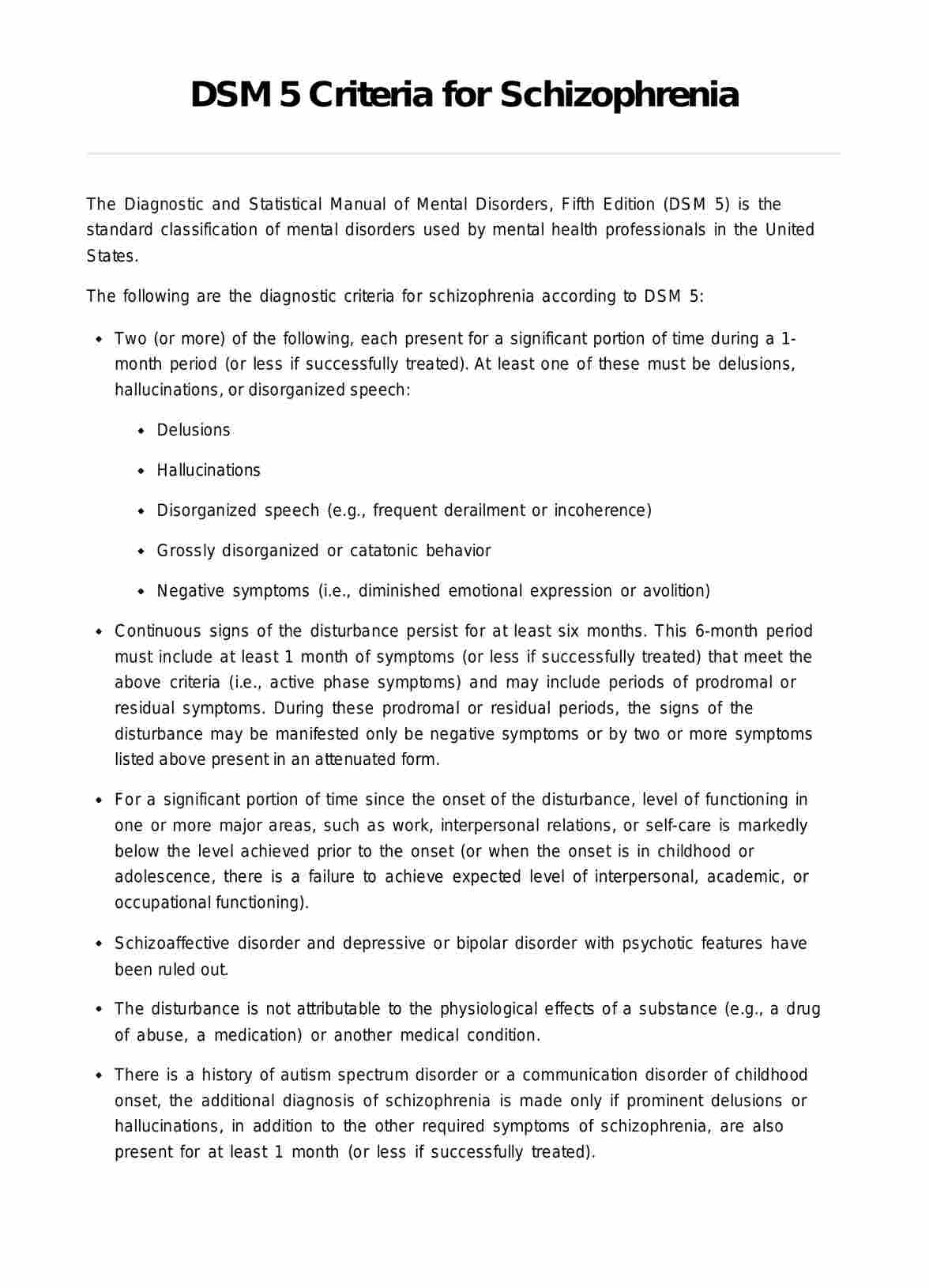While schizophrenia itself is not a communication disorder, it can significantly affect verbal and non-verbal communication. Some individuals may experience disorganized thinking and speech, which are symptoms of schizophrenia that influence their ability to communicate effectively.

DSM 5 Criteria for Schizophrenia
Explore the DSM 5 Criteria for Schizophrenia and learn more about the symptoms, diagnosis, and treatment options. Download a free PDF for your reference.
DSM 5 Criteria for Schizophrenia Template
Commonly asked questions
There may be overlaps in the genetic and environmental factors contributing to schizophrenia and autism spectrum disorder (ASD), but they are distinct conditions. However, individuals with ASD may have an increased risk of developing schizophrenia or related psychotic disorders later in life.
Prodromal periods refer to the initial phase before the full onset of schizophrenia, characterized by mild symptoms or changes in behavior. Residual periods occur after acute phases of the illness, where symptoms lessen in intensity but may not disappear entirely, often requiring ongoing management.
EHR and practice management software
Get started for free
*No credit card required
Free
$0/usd
Unlimited clients
Telehealth
1GB of storage
Client portal text
Automated billing and online payments











